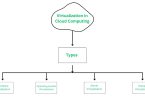AI can help to mitigate climate change in a variety of ways, for as through improving energy efficiency or lowering emissions from industry, agriculture, and transportation. By enhancing our capacity to predict catastrophic weather occurrences and offering decision-support tools to aid in more effective response, AI can also help us adapt to the effects of climate change. By assisting in the identification of risk factors and the creation of mitigation strategies, AI can also significantly increase our ability to withstand the effects of climate change.
Here are five innovations effectively using AI to help mitigate the climate crisis.
Green cooling technologies and reducing electronic waste:
The increasing need for energy is aggravating the climate catastrophe. Thankfully, cutting-edge green technologies, like those employed by Immersion4, can solve the problem of how to cool electronics without using any natural resources. If used widely, they can lower the energy usage of data centres from 20% to 4% without causing any pollution. E-waste is a serious problem that can be resolved with the use of green cooling technology.
Preventing plastic pollution:
The company can produce scientific observations of floating macro plastic litter in the water using an AI object detection technique. Compared to solely relying on human data collection and on-site observation, this cutting-edge approach to distant sensing plastic detection has proven to be highly effective. These artificial intelligence (AI) techniques make it much simpler to map the plastic and identify its “hot areas” of concentration, allowing The Ocean Cleanup to concentrate cleaning efforts where they are most needed.
Green digital agriculture:
A Bangalore-based business called Brahm Works is utilizing AI to decarbonize India’s agricultural industry. This approach makes use of artificial intelligence (AI) to track and optimize fertilizer nutrition for improved yield and lower greenhouse gas emissions for farmers. Watch the AI For Good Innovation Factory session to hear more about their solution.
Smart and sustainable cities:
A business called Sipremo uses artificial intelligence to create sustainable, safe cities. They have created an AI that can tell users where, when, and what kind of disaster or climate change event is likely to happen in the future, giving them a huge window of time to take action before the events take place. This lessens or even prevents the adverse environmental effects that the event will have on the region.
Satellite imagery to predict deforestation:
In order to forecast deforestation in unaffected areas, Deloitte and WWF launched the Deloitte Impact Foundation project. Deloitte uses satellite photography to make it feasible to assess the likelihood of deforestation based on details like the distance to towns, water sources, and other important considerations.
Improving energy efficiency:
To meet sustainability targets, it is essential to align sustainability goals with commercial objectives. By creating solutions through data-driven innovation, such as utilising AI for improved energy efficiency in IT operations and data centres, IBM helps its clients become sustainable.
Artificial Intelligence and Climate Change
AI has a major potential in helping to fight climate change since it can process large amounts of data and draw useful conclusions from them.
Below are some key areas where AI is poised to revolutionize climate change mitigation:
Optimizing Renewable Energy
AI positively impacts the utilization and integration of renewable energy. The wind and solar power systems are controlled using machine learning to ensure that they generate power at appropriate times based on weather prediction and electricity demand. This also enhances the integration of distributed generation to the grids resulting in a more stable and reliable supply of clean power.
Environmental Monitoring and Protection
AI systems can used to observe the process of deforestation, to identify changes in animal numbers, and to forecast the potential occurrence of disasters such as forest fires and floods using satellite imagery and sensor data. It is beneficial to monitor the environment in real-time, respond to emergencies, and develop effective protective measures.
Climate Change Models and Predictions
Climate modeling is one of the areas that has been impacted positively by the integration of AI. This has the advantage of being able to deal with large multi-parametric datasets that will produce more precise climate forecasts. These enhanced prognoses help planners and researchers to evaluate potential climate trends and design effective climate mitigation strategies.
Emphasis to Lower Carbon Footprints in Various Industries
AI’s capability in EM is not limited to specific sectors as it has shown the potential to decrease carbon footprints. AI is used in the design of structures that sustain energy, in mapping and routing strategies that minimize emissions, and in the development of technologies that capture carbon. Through improving efficiency and finding the areas where energy usage can be reduced AI can assist industries in converting to more environmentally friendly business models.
Also learn How AI Helps in Enhanced Customer Experience?
AI is one of the biggest assets in the crusade against climate change since it increases productivity, can help improve the tracking of climate change, and helps in the creation of better practices across industries.
AI is a crucial enabler that could fundamentally alter the way mankind fights climate change. We have a chance to create a more robust future for all of us via AI. We must keep funding and supporting climate-tech businesses that are utilising AI to create solutions as the effects of climate change become more pervasive and severe.






Leave a Comment